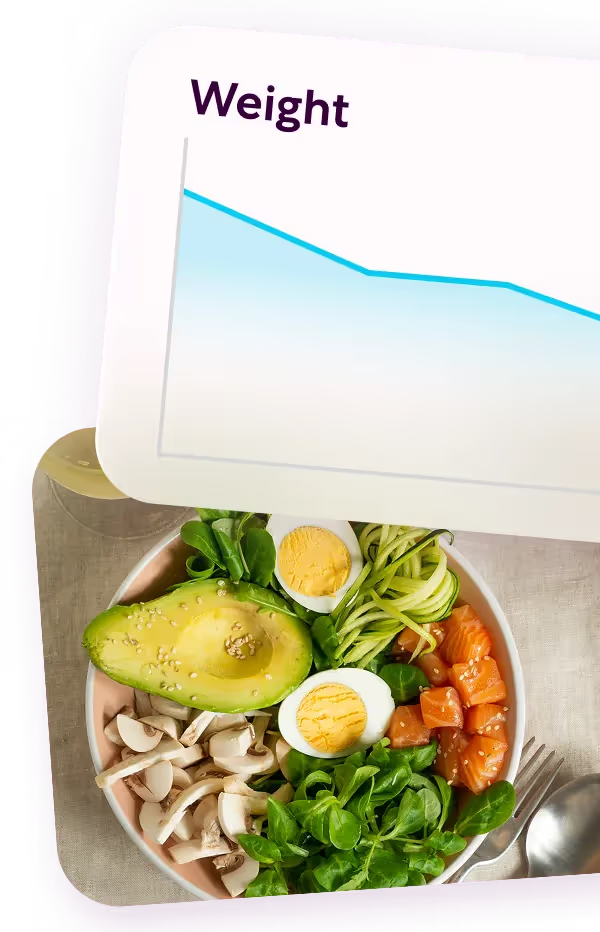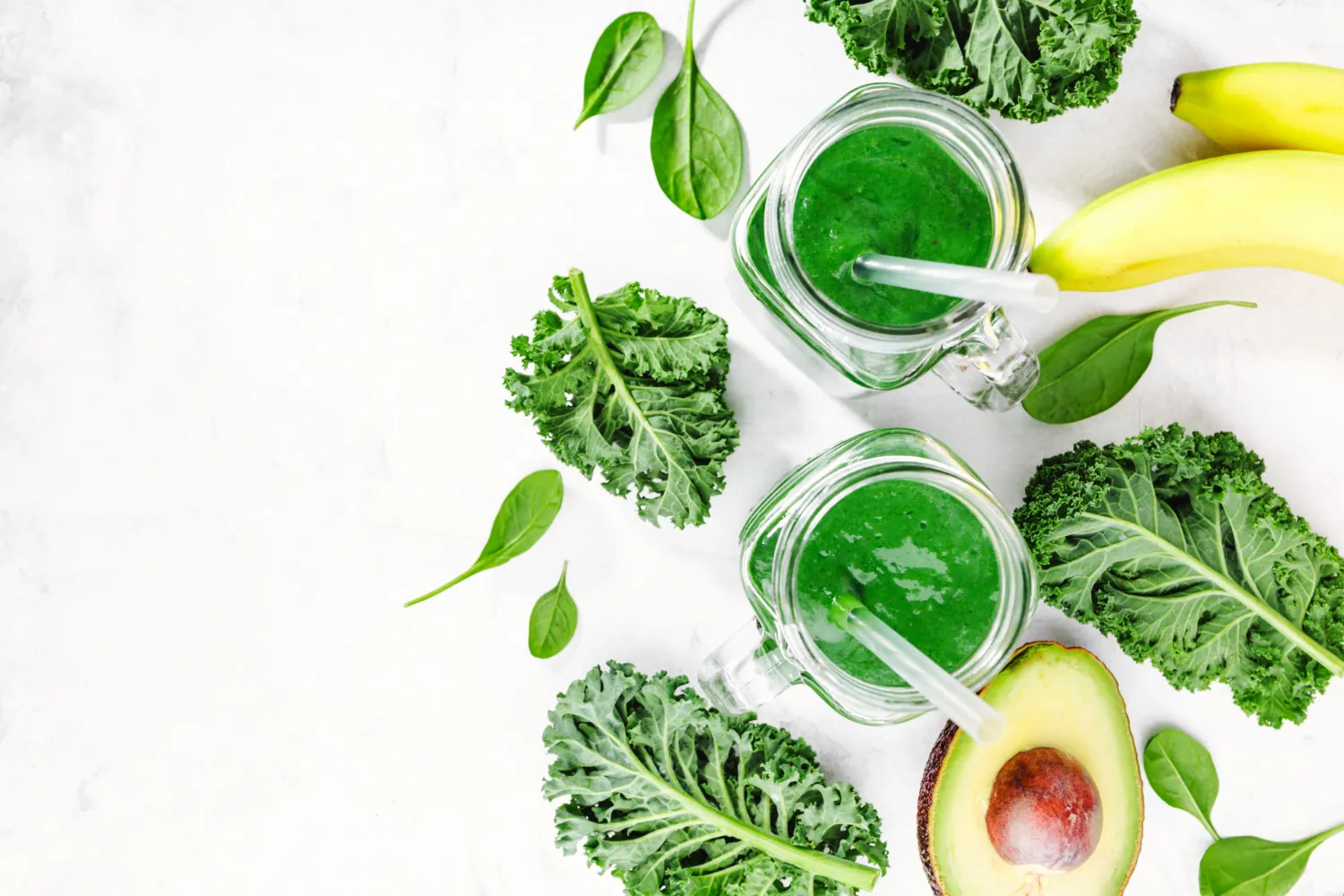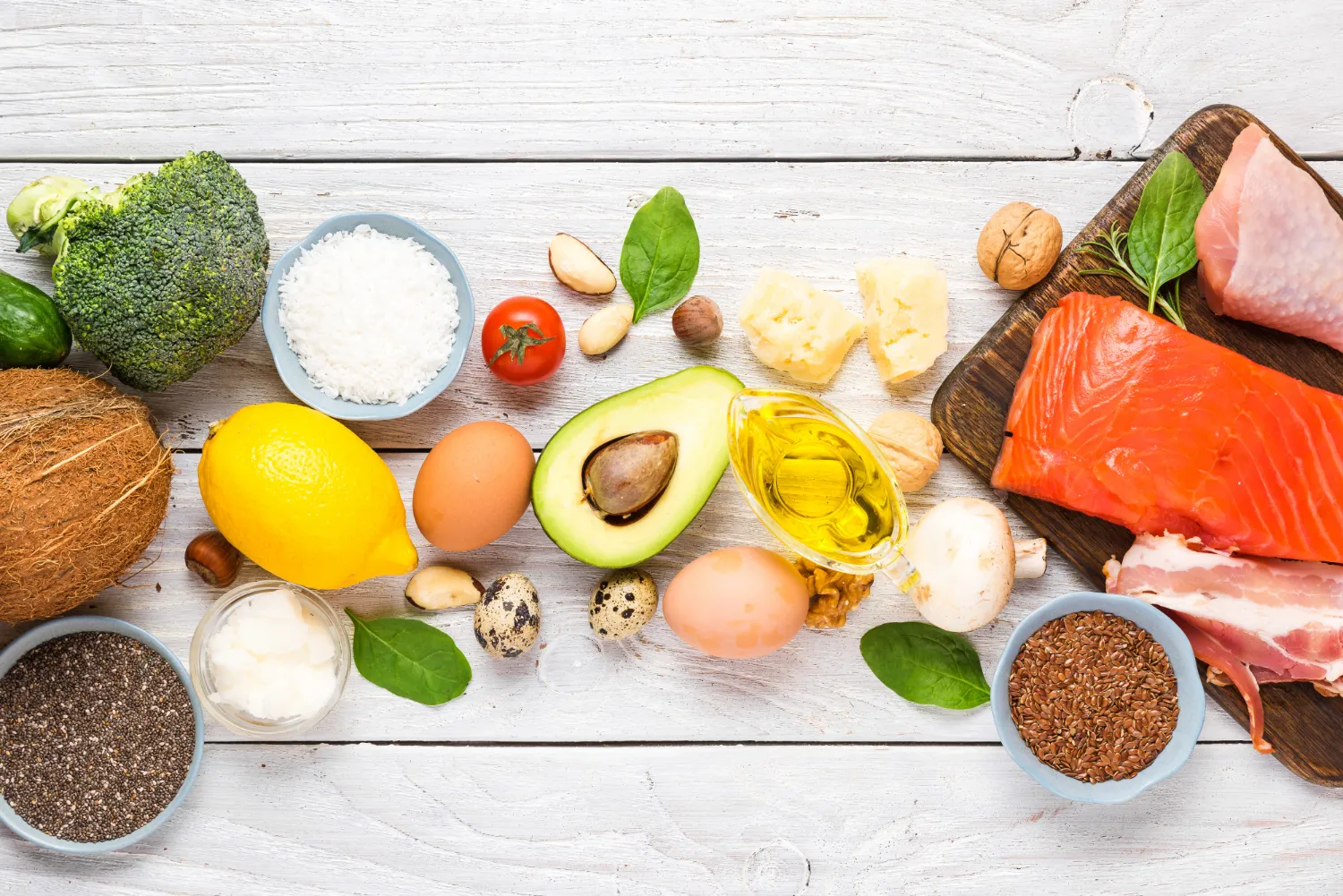Keto that finally moves the scale again.
Get your plan
Keto that finally moves the scale again.
Get your plan
Keto Macros for Women: Perfecting Ratios for Fat Loss and Energy
When it comes to keto, success isn’t just about cutting carbohydrates out of your diet—it's about finding the right balance of macronutrients that best fit your body type and goals.
If done correctly, a ketogenic diet can transform your health. This comprehensive guide will help you understand and find the perfect balance of fats, proteins, and carbs to achieve amazing results.
What Are Keto Macros and Why They Matter for Women

Many women are extremely successful with the keto diet because it eliminates processed and refined grains, which are responsible for weight gain. It also promotes satiety and suppresses appetite. Finally, the basic concept of weight loss behind the keto diet is that it forces the body to use stored fat instead of carbohydrates for energy.
However, women’s bodies, particularly hormonal balance and energy levels, are sensitive to dietary changes, which makes following the right macros extremely important.
The goal here is to jump-start your weight loss journey in a healthy manner without compromising your health, even if you end up transitioning into a different, possibly more sustainable way of eating.
Recommended Keto Macro Ratios for Women
The standard ketogenic diet follows these macro distributions: 70-80% fat, 12-20% protein, and 5-10% carbohydrates daily calories. However, you should adjust your ratios based on your activity level, age, weight loss goals, and overall health, so it’s important to consult experts about your health status first.
Ideal Fat Intake for Sustained Energy
Fat is the cornerstone of the ketogenic diet, providing sustained energy and supporting hormone production.
For a 2000-calorie diet, 70-80% fat translates to 155-178 grams of healthy fat per day. The best sources are avocados and avocado oil, extra virgin olive oil, almonds and macadamia nuts, and wild-caught fatty fish like salmon, mackerel, and sardines, which contain beneficial omega-3 fatty acids.
Moderate Protein for Muscle Maintenance
Protein preserves muscle mass and supports overall health, but too much can affect ketosis. The general guideline is 0.6-1.0 grams of protein per pound of lean body mass, with active and older women benefitting from increased protein intake even on a keto diet.
You should get 15 to 20% of your daily calories from healthy protein sources like grass-fed beef for added iron. Also consider eggs, free-range poultry, wild-caught fish, full-fat dairy (if you aren’t lactose intolerant), and plant-based protein sources like beans, legumes, quinoa, and tofu.
Keeping Carbs Low to Maintain Ketosis
This is the tricky part. Carbohydrates are so engrained into our daily diets that most of our food contains carbohydrates. But the ideal keto macro limits your carb intake to 5 to 10% of your total daily calorie intake, which is 200 calories if you’re on a 2,000-calorie diet.
The best low-carb nutrient sources are leafy greens and cruciferous vegetables like broccoli and spinach, as well as zucchini, summer squash, asparagus, and bell peppers.
Keto Diet Variations

Standard Ketogenic Diet (SKD)
SKD works well for most women. This straightforward approach maintains steady macro ratios daily, with meals composed of primarily healthy fats, moderate protein, and minimal carbohydrates.
A typical day might include eggs cooked in butter, a fresh salad with olive oil, and salmon with vegetables.
This dietary pattern helps maintain stable blood sugar and hormone levels while promoting steady fat burning.
Targeted Keto Diet (TKD)
If you’re the type who’s always active and moving about (think Reformer Pilates and CrossFit), added carb intake might benefit you more. In this particular variant, you’ll feed your body slightly more carbohydrates before your daily workouts.
30 grams of fast-acting carbohydrates as a pre-workout meal can boost your performance, giving you more energy for your sessions without disrupting ketosis.
Cyclical Keto Diet (CKD)
A cyclical keto diet might be a better fit if you need even more carbohydrates to fuel your intense workouts.
In this approach, you’ll follow a standard keto diet for 5-6 days, followed by 1-2 days of carbohydrate loading. However, this is a challenging weight loss method that requires extensive planning and eating carefully curated nutrient-dense carbohydrate sources like quinoa and sweet potatoes.
You should closely monitor how your body responds to carb cycling to avoid breaking ketogenesis and adjust for the best results.
High-Protein Keto Diet
Some women benefit from extra protein. This version allows up to 30% of calories from protein, which is particularly beneficial for professional athletes and active women. The increased protein intake helps muscle recovery and keeps you full, avoiding unnecessary and possibly unhealthy snacking.
Remember to keep your fat intake high while lowering your carbohydrates to make room for more protein while maintaining ideal macronutrient ratios.
Sample Keto Meal Plan with Macros

The sample meal plans we’re about to give below align with optimal standard keto ratios for women: 75% fat (120g), 20% protein (80g), and 5% carbs (25g net) based on a 1,600-calorie daily intake.
Day 1 Sample Meal Plan
Breakfast (450 calories)
Keto Power Bowl:
- 2 large eggs scrambled in 1 tbsp butter (220 calories, 19g fat, 12g protein, 0g net carbs)
- ½ medium avocado (160 calories, 15g fat, 2g protein, 2g net carbs)
- 1 cup sautéed spinach in coconut oil (70 calories, 7g fat, 1g protein, 1g net carb) Total macros: 41g fat (82%), 15g protein (13%), 3g net carbs (5%)
Lunch (500 calories)
Mediterranean Keto Plate:
- 5 oz grilled chicken thigh with skin (300 calories, 22g fat, 28g protein, 0g net carbs)
- 2 cups mixed greens (10 calories, 0g fat, 1g protein, 1g net carb)
- ¼ cup crumbled feta (100 calories, 8g fat, 5g protein, 1g net carb)
- 10 Kalamata olives (90 calories, 9g fat, 0g protein, 2g net carbs)
- 2 tbsp olive oil dressing (120 calories, 14g fat, 0g protein, 0g net carbs) Total macros: 53g fat (74%), 34g protein (23%), 4g net carbs (3%)
Dinner (450 calories)
Ocean Garden Plate:
- 6 oz wild-caught salmon (354 calories, 22g fat, 38g protein, 0g net carbs)
- 1 cup cauliflower rice with 1 tbsp butter (76 calories, 8g fat, 2g protein, 2g net carbs)
- 1 cup roasted Brussels sprouts with olive oil (120 calories, 9g fat, 4g protein, 4g net carbs) Total macros: 39g fat (68%), 44g protein (27%), 6g net carbs (5%)
Snacks (200 calories)
Power Bites:
- 1 oz macadamia nuts (200 calories, 21g fat, 2g protein, 1.5g net carbs)
- 1 oz aged cheddar (110 calories, 9g fat, 7g protein, 0.5g net carbs) Total macros: 30g fat (82%), 9g protein (15%), 2g net carbs (3%)
When broken down, the 1,600-calorie meal plan for Day 1 has 163g fat (75%), 102g protein (20%), and 15g net carbs (5%).
Day 2 Sample Meal Plan
Breakfast (400 calories)
Tropical Keto Smoothie:
- 1 cup unsweetened coconut milk (45 calories, 4g fat, 0g protein, 1g net carb)
- 1 scoop vanilla whey protein isolate (120 calories, 1g fat, 25g protein, 1g net carb)
- ¼ cup mixed berries (20 calories, 0g fat, 0g protein, 3g net carbs)
- 1 tbsp MCT oil (115 calories, 14g fat, 0g protein, 0g net carbs)
- 1 tbsp almond butter (98 calories, 9g fat, 3.5g protein, 1.5g net carbs) Total macros: 28g fat (72%), 28.5g protein (25%), 6.5g net carbs (3%)
Lunch (500 calories)
Tuna Avocado Boats:
- 6 oz light tuna in olive oil, drained (220 calories, 8g fat, 42g protein, 0g net carbs)
- ½ medium avocado (160 calories, 15g fat, 2g protein, 2g net carbs)
- 2 tbsp homemade keto mayo (180 calories, 20g fat, 0g protein, 0g net carbs)
- 2 large lettuce leaves (10 calories, 0g fat, 1g protein, 1g net carb) Total macros: 43g fat (70%), 45g protein (27%), 3g net carbs (3%)
Dinner (500 calories)
Asian-Style Beef Bowl:
- 5 oz grass-fed beef strips (375 calories, 27g fat, 35g protein, 0g net carbs)
- 2 cups stir-fried vegetables (broccoli, zucchini, bell peppers) (60 calories, 5g fat, 4g protein, 6g net carbs)
- 1 tbsp sesame oil for cooking (120 calories, 14g fat, 0g protein, 0g net carbs) Total macros: 46g fat (72%), 39g protein (24%), 6g net carbs (4%)
Snacks (200 calories)
Green Machine:
- 4 large celery stalks (20 calories, 0g fat, 1g protein, 2g net carbs)
- 2 tbsp almond butter (196 calories, 18g fat, 7g protein, 3g net carbs) Total macros: 18g fat (67%), 8g protein (23%), 5g net carbs (10%)
In total, the 1,600-calorie sample meal plan we gave for Day 2 has 135g fat (73%), 120.5g protein (22%), and 20.5g net carbs (5%).
Tips for Tracking and Adjusting Keto Macros

Two of the biggest problems with the keto diet are keto flu and hitting a plateau. You can manage both by tracking your food intake using apps or journals and giving your body enough time to adjust to your new diet. Then, once you hit a plateau, you can make certain adjustments to your macro ratios to break through stalled progress and see evident changes once again.
However, you must pay close attention to your body’s signals. Base your portions on your hunger and energy levels, not just the macronutrient ratios. Also, consider that you’ll need more of certain nutrients around your menstrual cycle, including iron, Vitamin C, vitamin K, and Omega-3 fatty acids.
Finally, you can’t always base your progress on the scales. Sometimes, your weight might stay the same, but your body shape will have already improved. We recommend taking regular photos and measurements of your body. The benefits might also show in other aspects of your life, such as your mood, energy levels, and sleep quality.
Recap: Adapting Your Keto Plan for Long-Term Success
Just like with every other meal plan or diet, finding the ideal keto macro ratio requires some experimentation.
Start with the standard ratios and adjust based on how your body responds and if it’s in line with your goals. Sustainability is the key to weight loss and a healthy lifestyle. The best macro balance is the one that leaves your body feeling satisfied and energized enough to complete your day-to-day tasks.
And before we end this, we recommend that you stay connected with other keto-focused women.
Reverse Health gives women a community where they can share experiences and learn from each other, regardless of their goals.
Keto that finally moves the scale again.
Get your plan
Sources
FAQs
What are the ideal keto macros for women?
The ideal keto macros for women typically consist of 70-75% fats, 20-25% protein, and 5-10% carbohydrates, but these ratios can vary depending on individual goals and activity levels.
How do keto macros help with fat loss for women?
Keto macros encourage the body to enter ketosis, where it burns fat for fuel instead of carbs. This process promotes fat loss while preserving muscle mass and energy.
How can women calculate their keto macro ratios?
Women can calculate their keto macros by determining daily calorie needs and distributing them based on the percentage of fats, proteins, and carbs. Using a keto macro calculator simplifies this process.
Can keto macros boost energy levels for women?
Yes, by prioritizing healthy fats as the primary energy source, keto macros help stabilize blood sugar levels and provide sustained energy throughout the day.
Do keto macro ratios differ for women based on activity levels?
Yes, active women may need slightly higher protein intake to support muscle recovery and performance, while less active women might focus on maintaining standard keto ratios.






